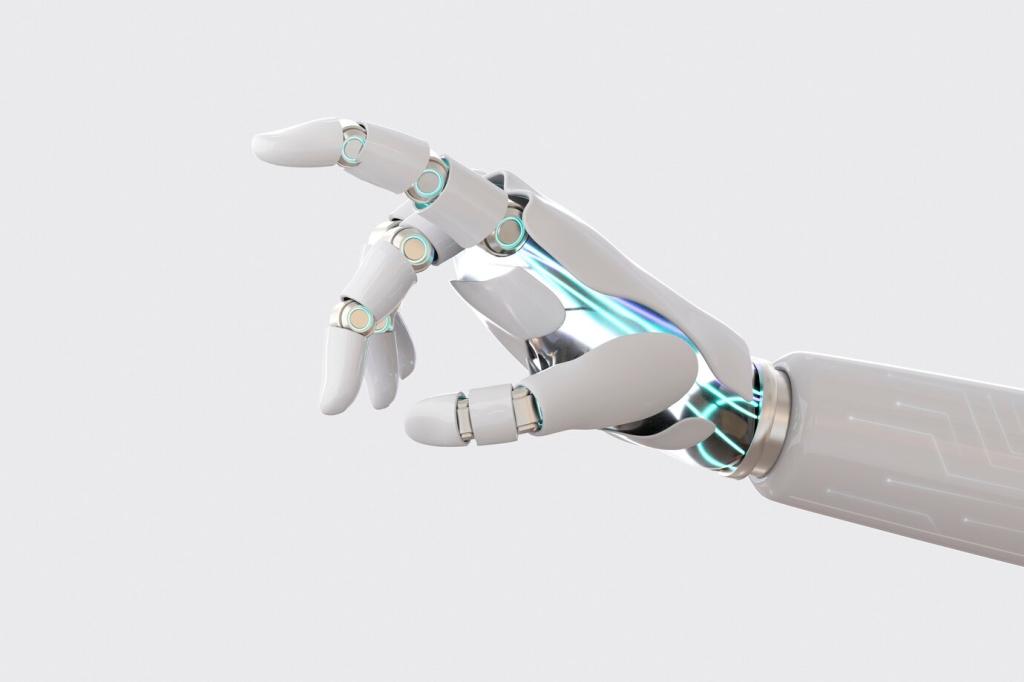Energy Efficiency with AI-Powered Systems: Smarter Watts, Better World
Selected theme: Energy Efficiency with AI-Powered Systems. Welcome! Here we explore how machine learning, sensors, and smart control turn everyday operations into lean, resilient, and planet-friendly systems. Expect practical ideas, real stories, and a warm community vibe. If this sparks your curiosity, subscribe, leave a comment, or share your own efficiency wins—we build better together.

Why AI Is the New Energy Multiplier
Most facilities collect vast streams of data yet act on only a sliver. AI translates those overlooked signals into clear, prioritized actions that reduce consumption without sacrificing outcomes, building confidence with every measurable, auditable improvement.

Sensing and Prediction: The Beating Heart of Efficiency
A digital twin mirrors your system with physics-informed models and live data. It listens to meters, thermostats, valves, and weather, then simulates outcomes before you commit, preventing wasteful trial-and-error and protecting comfort and product quality.


We began by measuring PUE and mapping sensor quality. The baseline revealed oversized safety margins and uneven airflow. By cleaning the data pipeline first, we ensured every recommendation rested on trustworthy evidence, not wishful thinking or noise.

We deployed an AI that continuously tested safe adjustments within guardrails, learning which combinations of setpoints delivered cooling with fewer compressor starts. Operators retained veto power, and every move was logged and reversible for full transparency.

Cooling energy dropped significantly, PUE improved, and hot spots stabilized—even during heat waves. The biggest lesson: collaboration matters. Operators’ insights made the AI braver and safer. If this resonates, subscribe for our upcoming deep dive checklist.

Audit Your Data Before Your Equipment
Inventory sensors, sample rates, and time synchronization. Fix drift, gaps, and mislabeled points. A tidy data foundation accelerates pilot momentum and prevents missteps that erode trust when early insights collide with messy, inconsistent measurements.

Pick a High-Leverage Pilot
Select a scope where savings are visible and controllable: HVAC scheduling, chiller optimization, compressed air leaks, or lighting with occupancy. Define a simple success metric and a realistic timeline, then share milestones to keep stakeholders engaged.

Ethics, Safety, and Human Oversight
Establish boundaries: minimum ventilation, temperature limits, process tolerances. Keep humans in the loop with clear override controls and plain-language explanations. Invite frontline operators to co-design rules so the AI augments, not replaces, expertise.
Measuring What Matters: KPIs and Feedback Loops
Track kWh per unit output, PUE for IT, WUE for cooling, demand peaks, and comfort or quality scores. Tie actions to outcomes so every adjustment has a measured, comprehensible effect that encourages iterative learning across teams.
Measuring What Matters: KPIs and Feedback Loops
Design dashboards that explain causality: what changed, why it mattered, and what to try next. Pair charts with short narratives. Celebrate small wins publicly to reinforce momentum and invite suggestions from maintenance, finance, and operations together.
Measuring What Matters: KPIs and Feedback Loops
Post your monthly learnings, ask questions in the comments, and subscribe for pattern libraries you can reuse. Collective intelligence accelerates savings, and your story may become the spark for another team’s breakthrough this quarter.
Edge Intelligence at the Meter
Small, robust models running near equipment react in milliseconds, even without cloud connectivity. They smooth control signals, reduce chatter, and keep everything efficient when networks are unreliable or cybersecurity policies limit external dependencies.
Batteries, EVs, and Orchestration
AI can schedule charging, cycle batteries for peak shaving, and align flexible processes with low-carbon hours. The result is fewer spikes, lower costs, and a gentler footprint that supports renewables integration without sacrificing service levels.
Resilience Under Climate Stress
Heat waves, storms, and supply volatility are the new normal. AI prepares by forecasting risk, pre-cooling, rerouting loads, and safeguarding critical zones. Join our newsletter to receive templates for resilience playbooks tailored to your sector.
